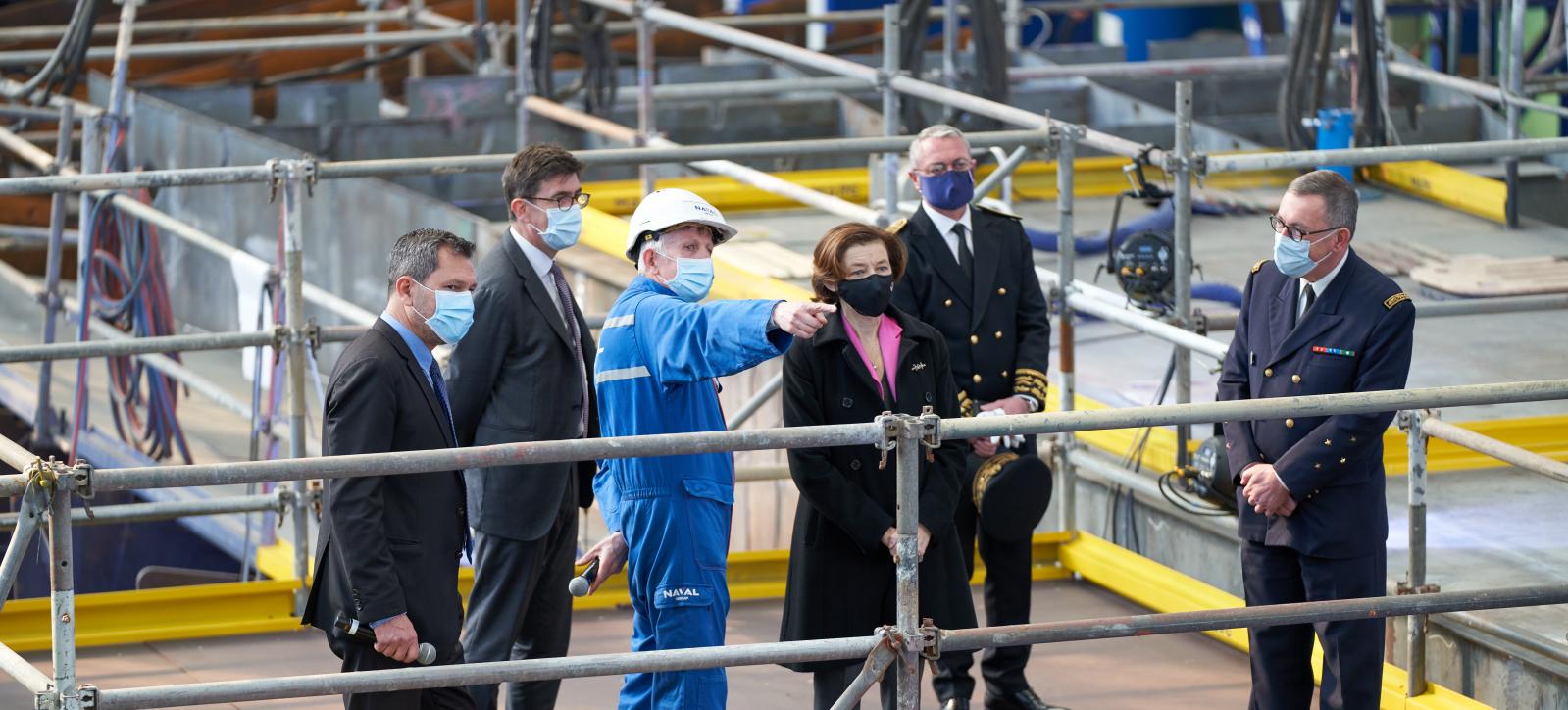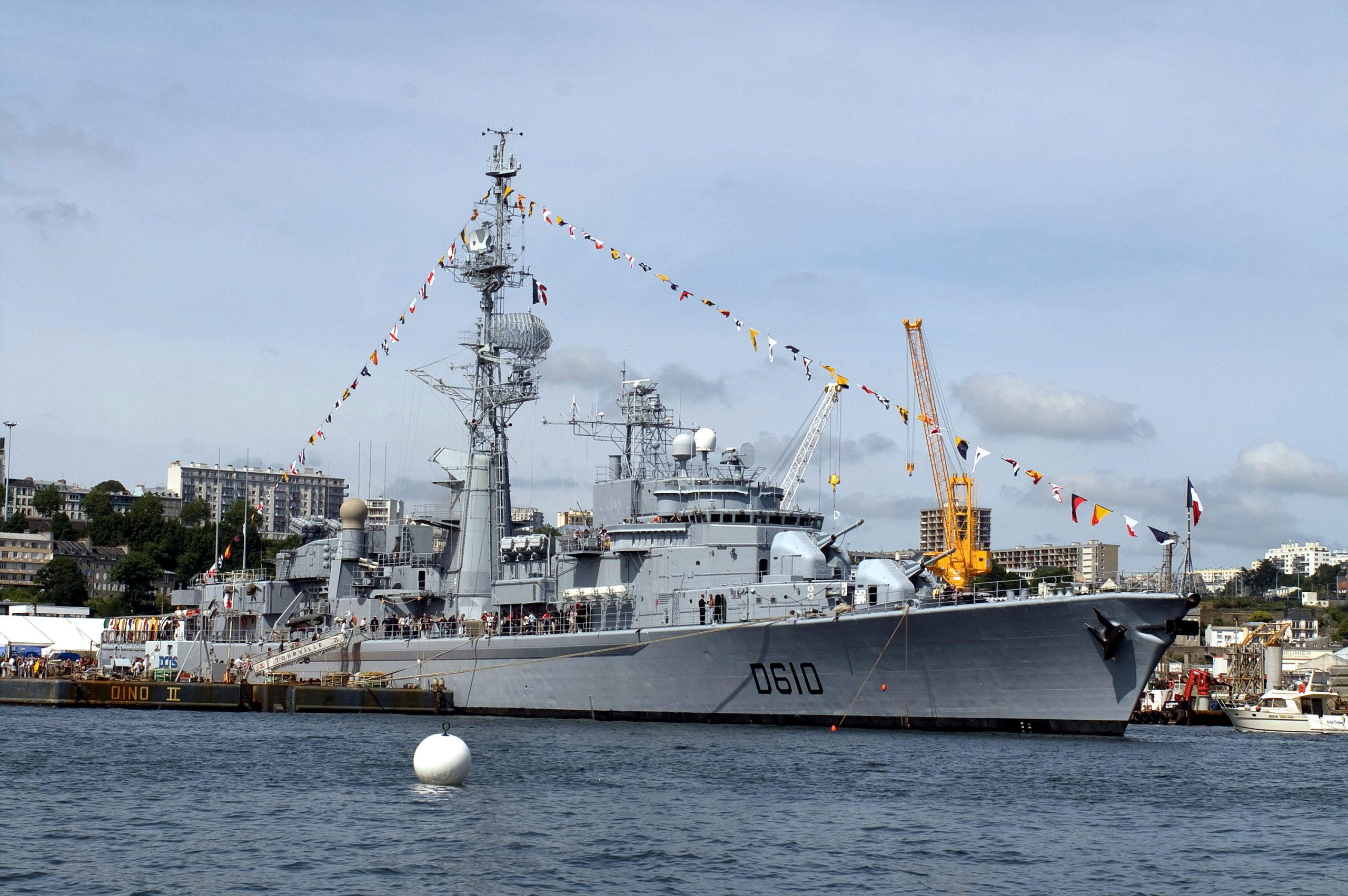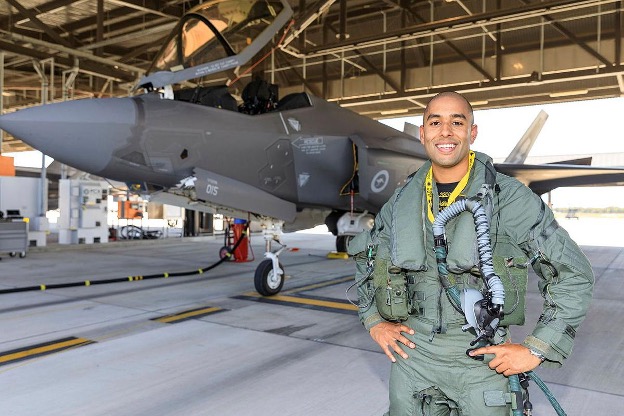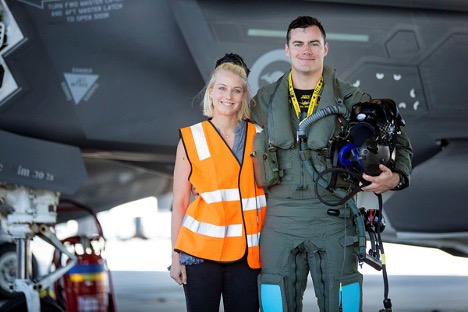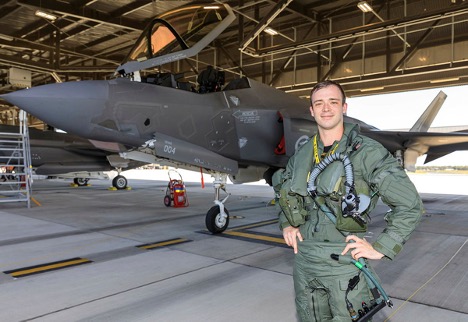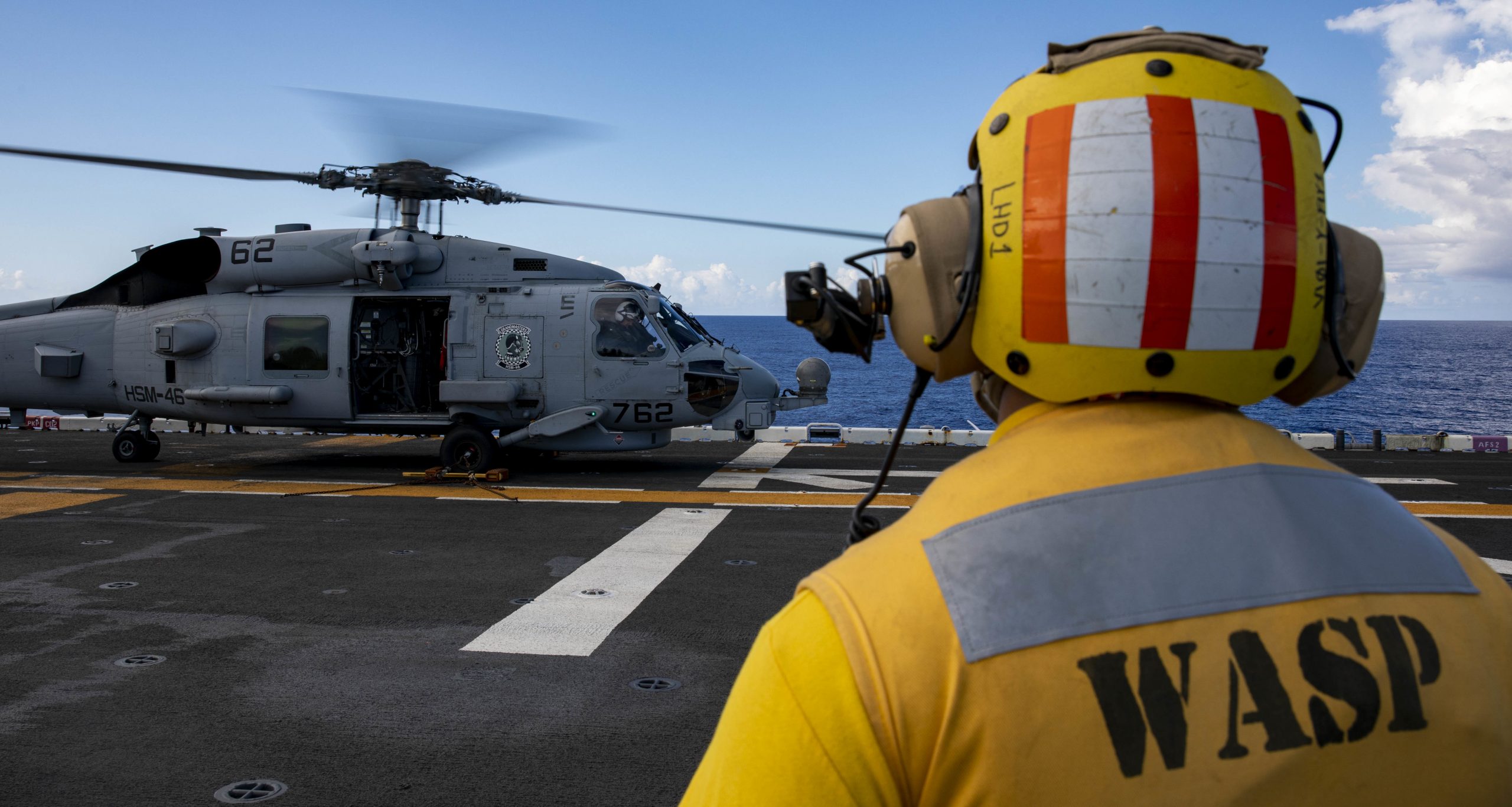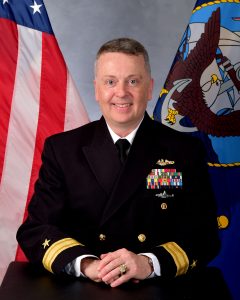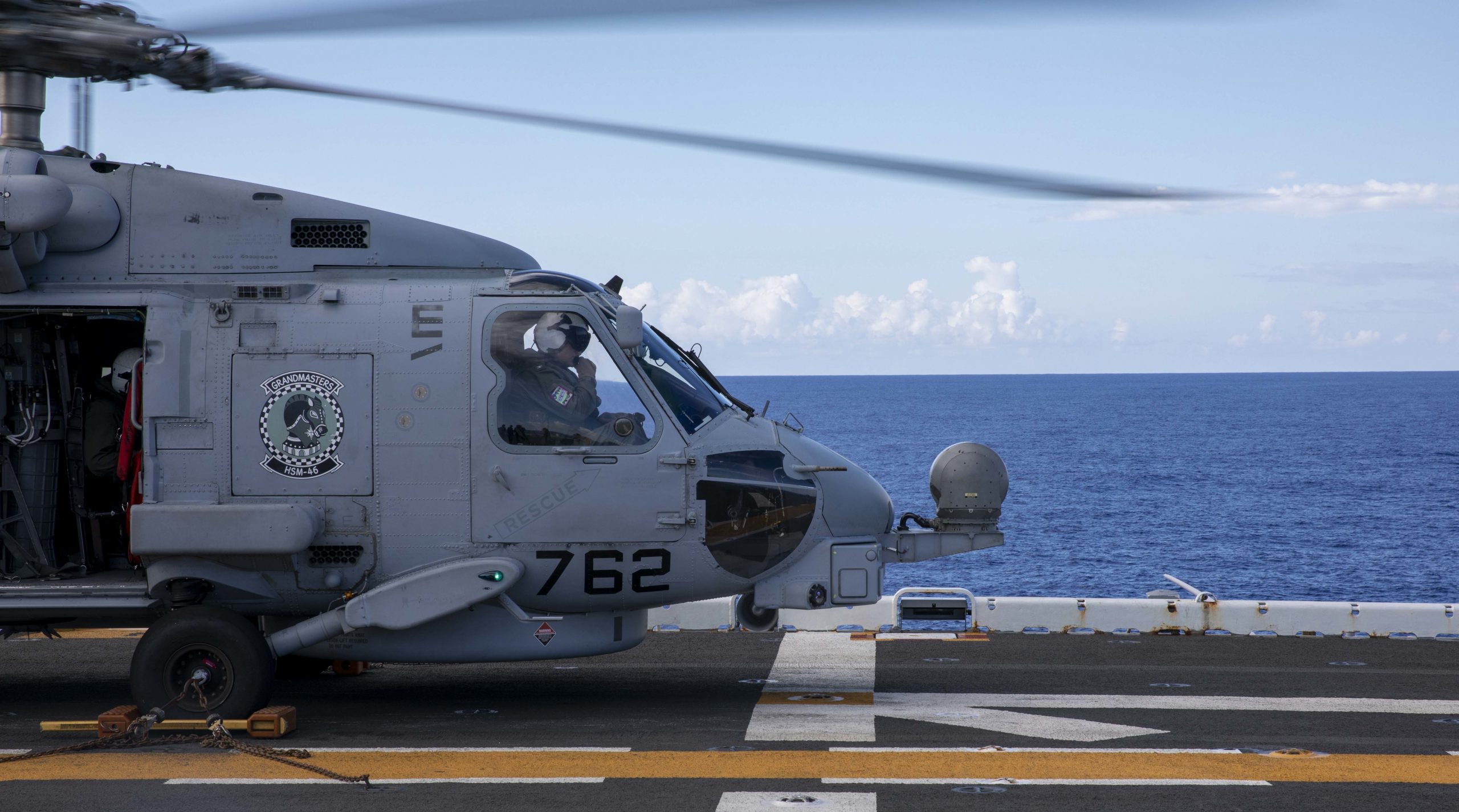By Robbin Laird and Ed Timperlake
When 2nd Fleet was stood up in 2018, it was not the case of it being re-established. It was an older name but was being stood up in a new historical and military context. It was being stood up in the context of the rise of 21st century authoritarian challengers, an Alliance being reworked in the wake of the Crimean events in 2014, and in the context of shift from the land wars to reshaping the force to deal with those challengers.
It was also being shaped as new military capabilities were being generated both on the blue and red sides of the equation. It is a command which can leverage the practical capabilities which fifth generation aircraft operating in the UK and the Nordics can deliver as well.
It is an incubator of change with VADM Lewis as the dual hatted commander of 2nd Fleet and Allied Joint Forces Command Norfolk. But there is a third key element of the effort as well, and the three taken together are operating as an incubator for change in reworking a distributed integrated maritime command shaping 360-degree combat capabilities from the sea.
According to the Centre’s website:
The Combined Joint Operations from the Sea Centre of Excellence (CJOS COE) was established in May 2006. Representing 13 nations, CJOS is the only Centre of Excellence in the United States, and one of 27 NATO accredited Centres worldwide, representing a collective wealth of international experience, expertise, and best practices.
Independent of the NATO Command structure, CJOS COE draws on the knowledge and capabilities of sponsoring nations, United States Fleet Forces, United States SECOND Fleet, and neighboring U.S. commands to promote “best practices” within the Alliance. CJOS COE also plays a key role in aiding NATO’s transformational goals, specifically those focused on maritime-based joint operations. We enjoy close cooperation with Allied Command Transformation (ACT), Allied Maritime Command (MARCOM), other NATO commands, maritime COEs, and national commands.
Comprised of 30 permanent staff and 20 U.S. Navy reservists, CJOS COE is highly flexible and responsive to its customers’ needs. The Centre cooperates, whenever possible, with industry and academia to ensure a comprehensive approach to the development of concept and doctrine.
But the story is even more interesting than this description provides. For the Centre continued to exist while 2nd Fleet did not. And in that period of time between its stand down in 2011 and its standup again in 2018. The Centre worked hard to shape the reworking of how maritime operations NATO wide contribute to Atlantic defense and, in the wake of the events of 2014, focused on the coming reset of North Atlantic maritime operations. When Admiral Lewis came, he understood how important what the Centre was doing was to the core operations of 2nd Fleet itself, not just in terms of managing a NATO effort, but the kind of distributed integrated force which needs to be shaped to deal with the new strategic environment.
The importance of shaping the kind of C2 that could fully leverage new capabilities like fifth generation aircraft where the allies are key players. Combining the new Queen Elizabeth carriers, the P-8 enterprise operating with the ever-improving F-35 enterprise while preparing for the coming of the new Ford class carriers, all are in synergistic support of the U.S. Navy’s shift to fighting as a fleet and is a huge strategic move for U.S. and Allies to fight and win at sea.
This is a significant shift, and one which requires leveraging all assets because it is clear that the Sea Centre of Excellence indeed provides a significant strategic contribution filtered through leadership with extensive well-earned tactical sea service.
Ed Timperlake had a chance to interview the Deputy Director of the Centre, Commodore Tom Guy from the Royal Navy on March 5, 2021. Guy comes from the Surface Warfare Community and has significant experience with the Royal Navy and in operating in coalition operations as well.
During the interview, he underscored that 2nd Fleet was focused on its role as a coalition and joint command and control force; Vice Admiral Lewis has focused from the outset on distributed command and control and shaping the command as a warfighting instrument. This was simply not going to happen unless the U.S. Navy becomes much more part of the European NATO navies, and to work more effectively as an integrated force.
As Commodore Guy put it throughout the discussion, they were supporting the 2nd Fleet’s mission of being able to more effectively fight tonight. To do so means, finding ways for the U.S. and the allies to integrate the current capabilities more effectively. And this requires in many cases, relatively low technology solutions, but requires ensuring that NATO C2 systems are compatible with U.S. ships and for U.S. Navy training exercises to encompass C2 with European NATO navies.
As Commodore Guy put it: “In Second Fleet terms, we very focused on the practical C2 aspects, notably making sure that US Carrier Strike Groups and Expeditionary Strike Groups are familiar with NATO tactics. We are focused, for example, on working with CSG-4 to ensure that NATO familiarity is built into their training approach. And we work on the reverse as well with European NATO navies ensuringfamiliarity with U.S. Navy procedures.”
He added: “We are far from being alliance navies being completely integrated, and we are focused on the low hanging fruit. Some of this is about technology; some of it is about different operational cultures. Vice Admiral Lewis has been focused on having NATO C2 installed on U.S. Navy ships and upon shaping exercises and training whereby the operational cultural differences are attenuated. We must ensure that Second Fleet has what it needs to be the most effective multinational maritime component command it can be, on Day Zero.”
To make a very important point on a Fight Tonight Command Fleet attitude,- the Center of Excellence effort is near to mid-term. In other words, it is very much “the art of the possible,” leveraging the practical near-term can greatly inform discussions for insightful longer-range planning for future maritime operations.
Commodore Guy underscored that getting that paradigm right allows for future iterations of combat technology to be worked in a more integrated manner going forward. Here the Centre plays a key supporting role to Allied Command Transformation, which is also located in the Norfolk area.
Because the foreign military community in Norfolk is very up close and in a practical sense a place where folks know one another and thus allows for a significant cross fertilization between the Centre’s role in support of 2nd Fleet with ACT’s longer term thinking as well As Commodore Guy put it: “We need the second fleet staff to innately to have the understanding about what it takes to integrate with a UK or French or Italian carrier strike group.
Clearly, this is a work in progress. This one where culture and technology need to be worked interactively to shape a more effective inter-allied force. The recent experience of the Marines operating with the Brits of the Queen Elizabeth in the Atlantic certainly is photo op of a keyway ahead in shaping such a force. As one British naval officer involved in the effort put it to us: “The Marines and Brits using the same aircraft thinking as a wolfpack is a significant step forward towards advanced integration.”
Appendix
This story by C2F published on October 1, 2020 highlighted the transfer of directorship of Combined Joint Operations from the Sea Centre of Excellence (CJOS COE) to C2F.
Combined Joint Operations from the Sea Centre of Excellence (CJOS COE), a NATO-accredited, multi-national military think tank, transferred directorship from the deputy commander of U.S. Fleet Forces (USFF) Command to commander, U.S. 2ndFleet (C2F), Oct. 1.
The transition from Vice Adm. Dave Kriete, deputy commander, USFF, to Vice Adm. Andrew Lewis, who is commander, C2F, and dual-hatted as commander, Joint Forces Command Norfolk, will strengthen the relationship between CJOS COE and C2F, and build upon previously established networks at USFF.
Established in May 2006, CJOS COE represents 13 nations and is the only COE in the U.S. As one of 26 NATO-accredited centers worldwide, they represent a collective wealth of international experience, expertise, and best practices, critical to operations in the North Atlantic.
“By linking C2F, JFC Norfolk, and now CJOS COE, national and NATO commands will further align, catalyzing the development of modern warfighting capabilities in the North Atlantic, and increasing readiness across the joint force,” said Lewis. “We must be postured to respond to existing multi-domain threats tonight, yet make urgent efforts to adapt now to the new challenges of the security environment of tomorrow.”
The realignment comes shortly after Joint Force Command Norfolk’s initial operational capability ceremony on Sep. 17.
“The important partnership between the Combined Joint Operations from the Sea Centre of Excellence (CJOS COE) and the United States Fleet Forces Command has been superb,” said Kriete. “This key relationship will continue between CJOS COE and C2F and help ensure maritime security in the Atlantic.”
U.S. 2nd Fleet, reestablished in 2018 in response to the changing global security environment, develops and employs maritime forces ready to fight across multiple domains in the Atlantic and Arctic in order to ensure access, deter aggression and defend U.S., allied, and partner interests.
“This more direct relationship between CJOS and C2F will enhance allied interoperability and further expand on CJOS COE’s connections with U.S. commands assigned to train, operate, and deploy with NATO maritime forces, said Commodore Tom Guy, Royal Navy, deputy director of CJOS COE. “It is a logical and really welcome step as we collectively work to maintain our warfighting edge in the North Atlantic.”
In his introduction to the 2021 CJOS COE publication on Cutting the Bow Wave, Vice Admiral Lewis highlighted how he saw the importance of the Centre to his command’s efforts:
2020 has seen sweeping challenges to international relations across the globe. Even to the layman, it is obvious that we are not operating in the same security environment as we were at the start of the 21st century; we now face the reality of multiple near peer competitors operating across multiple spectrums of instruments of power.
The North Atlantic is a more contested and complex space, and more than ever we need to ensure alignment and cohesion within and across NATO’s maritime domains. As NATO continues to evolve to maintain its strategic advantage, there has been an evolution here too, and a subtle shift in emphasis, with the Directorship of CJOS COE being aligned with the Command of US SECOND Fleet and Joint Force Command Norfolk.
While CJOS will continue providing the support to the Alliance as it always has, under the direction of its Sponsor Nations, this shift helps to better align missions and their interconnectedness. I am really excited about the positive effect this will have on improving allied maritime interoperability across the North Atlantic, while linking the really valuable forward-looking conceptual work that CJOS does with operational and tactical maritime commanders.
CJOS brings a wealth of knowledge and expertise, from providing practical advice and education to support Allies working together effectively in the maritime domain now, to thinking about how we harness unmanned systems and artificial intelligence in the future maritime battle-space.
With our ambitious program of work for 2021, we will continue to drive Alliance maritime warfare development, and specifically support SECOND Fleet and JFC Norfolk in their deterrence and defense missions. This alignment effort must move the yardsticks not only on interoperability but bring more effort on integration, interchangeability and resilience at a level that provides “reflexive responsiveness” to any challenge presented by our adversaries. I am committed to developing these themes through a networked approach.
In his introduction to the same document, Commodore Guy highlighted the importance of working the low hanging fruit with record to integratability across the NATO navies:
As our Director has outlined, security challenges abound, and CJOS COE is firmly focused on supporting NATO in maintaining the edge in the maritime domain.
But whilst our focus is on the maritime domain, ‘multi-domain’ and ‘cross-domain’ thinking is coming increasingly to the force, and the commanders of the future will be ‘domain agnostic’ as they grapple with ever increasing amounts of information, sorted and delivered by rapidly advancing technology.
They will wield weapons with levels of range and precision that stretch the boundaries of areas of interest, both geographically and conceptually. Notwithstanding the increasing porosity of domain boundaries, as Allied Command Transformation (ACT) defines its warfare development priorities for the coming decades, and Allied Command Operations (ACO) refines its deterrence strategy, CJOS COE’s work in support of both of those is focused on those factors affecting operations over, on, under and from the sea.
As SACEUR, General Tod Wolters, notes in his foreword to John Andreas Olsen’s excellent ‘Future NATO’ Whitehall Paper, NATO needs to be challenged, conceptually and intellectually: “We must replace old ideas with new thinking.” You will see in this edition some of our new thinking on the implications of developments in hypersonics, big data and cyber interoperability.
However, our focus is not solely technical; geopolitics, strategy and command and control are also key factors in how warfare develops, and the reader will find thoughts on strategic developments in and beyond NATO’s traditional area of responsibility, from the Black Sea to the Baltic to the High North and the Far East.
From a practical perspective, we have an equally vital discussion on future sea-basing and sustaining maritime operations, and the necessary interoperability basics to keep the Alliance effective at sea and from the sea.
For an e-book version of the document, see below:
We also discussed NATO’s Digital Ocean initiative, which will allow expanded capabilities for NATO navies to operate a distributed integrated fleet.
As Keit Pentus-Rosimannus and Michael D. Brasseu wrote in an Atlantic Council article published on August 19, 2020:
NATO is well-positioned to lead this new era of innovation. With its thirty Allies and over one trillion dollars in annual defense expenditures dedicated to the collective defense of their nearly one billion citizens, NATO is the largest and most powerful military alliance on the planet. The Alliance is uniquely situated at this nexus of security and environment.
Perhaps the best illustration of this nexus is NATO’s maritime domain. The seas remain essential for global trade, with 90 percent of the world’s trade conducted by sea. And additional trade routes are opening in the Artic due to climate change and exposing NATO’s northern flank to Russian and Chinese fleets. Furthermore, the global digital economy runs on cables on the ocean’s floor. It is the sea that connects us all, powers the global economy, and is primed for innovation.
NATO could lead this innovation, by bringing together key stakeholders across government, academia, and industry to create a ‘digital ocean’ and exploit enormous swaths of data with artificial intelligence-enhanced tools to predict weather patterns, get early warning of appearing changes and risks, ensure the free flow of trade, and keep a close eye on migration patterns and a potential adversary’s ships and submarines. And it could be done in a sustainable carbon-neutral manner by leveraging the “Blue Tech” revolution currently underway.
Innovators across Europe and North America continue to design and build a diverse array of maritime surface and subsurface drones. Many of these maritime drones are propelled by wind, wave, and solar energy and carry sensors that can collect data critical to unlocking the yet untapped potential of the ocean.
If NATO Allies could stich these drones together in a secure digital network, it could essentially create an ‘Internet of Things’ for the ocean, a ‘digital ocean’ spanning from seafloor to satellite that stretches across millions of square miles. It is clear no single nation could undertake such an effort on their own, nor would they achieve the synergistic network effects an alliance like NATO offers, when such an effort is undertaken in a coherent manner.
There are significant fiscal benefits as well, as maritime drones greatly enhance the capabilities of ships, submarines, and other platforms at a fraction of the cost. These savings would be magnified by the fact that the digital ocean would be powered by free and sustainable energy sources like wind, wave, and solar.
The digital ocean will drive the ocean economy which is now $2.5 trillion a year. It has the potential to bring in new solutions and to use the tech change megatrend for the benefit of all—to create a more sustainable planet as well as robust economic driver through applications such as offshore wind, sustainable aquaculture, and carbon sequestration through growing food crops like seaweed.
Commodore Guy provided a very helpful perspective with regard to the way ahead for maritime autonomous systems for NATO Navies:
“Recently, we have focused more on maritime unmanned systems and their operational integration into NATO navies. These remote sensors can provide for a contribution, but they too need to fit into the shift to mission command. We focus on mission command because the kind of connectivity used in the land wars have allowed for very hierarchical C2; contested operations in the North Atlantic requires a different approach, a mission command approach empowering a distributed force. Maritime autonomous systems can be part of that; they are not a substitute for that.”
For a look at the Maritime Unmanned Systems Innovation and Coordination Cell within NATO, see the following:
Commodore Tom Guy Royal Navy Deputy Director, Combined Joint Operations from the Sea Centre of Excellence
Tom Guy is fortunate to have enjoyed a broad range of rewarding operational, staff and command roles ashore and afloat from the UK to the Far East. Early appointments included a wide variety of ships, from patrol craft to mine-hunters, frigates, destroyers and aircraft carriers, ranging from fishery protection to counter-piracy and UN embargo operations as well as training and operating with a broad range of NATO allies. Having trained as a navigator and diving officer early on, Tom specialised as an anti-submarine warfare officer and then a Group Warfare Officer. He then went on to command HMS Shoreham, a new minehunter out of build, and then HMS Northumberland, fresh out of refit as one of the most advanced anti-submarine warfare frigates in the world. His time as Chief of Staff to the UK’s Commander Amphibious Task Group included the formation of the Response Force Task Group and its deployment on Op ELLAMY (Libya) in 2011 and he later had the great privilege of serving as the Captain Surface Ships (Devonport Flotilla).
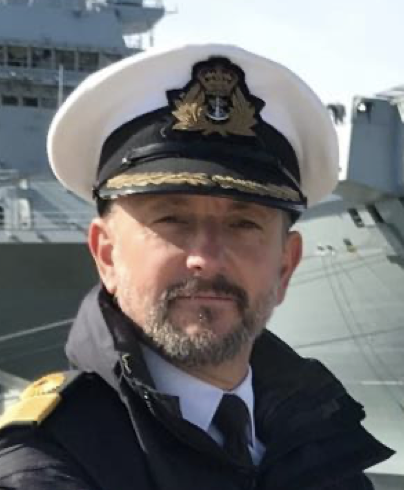
Shore appointments have included the Strategy area in the MOD, a secondment to the Cabinet Office, Director of the Royal Naval Division of the Joint Services Command and Staff College, and the role of DACOS Force Generation in Navy Command Headquarters. He has held several Operational Staff appointments, including service in the Headquarters of the Multi National Force Iraq (Baghdad) in 2005. Other operational tours have included the Balkans and the Gulf, both ashore and afloat. In 2016-17 he was the Deputy UK Maritime Component Commander in Bahrain, working alongside the US Fifth Fleet Headquarters. He assumed the role of Deputy Director of the Combined Joint Operations from the Sea Centre of Excellence in Norfolk, VA, in September 2017.
A graduate of the UK’s Advanced Command and Staff Course and the US Capstone Course, with a Master’s Degree from Kings College, Tom is a Younger Brother of Trinity House and a keen yachtsman (qualified as an Offshore Yachtmaster), as well as being a classic car and bike enthusiast. He is married to Katie who is a sailing instructor and they have two grown up children, both of whom are also keen sailors.



